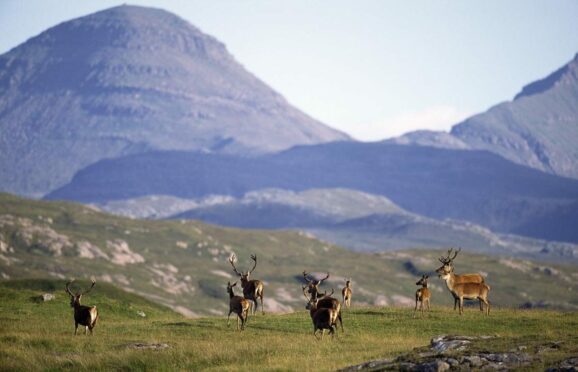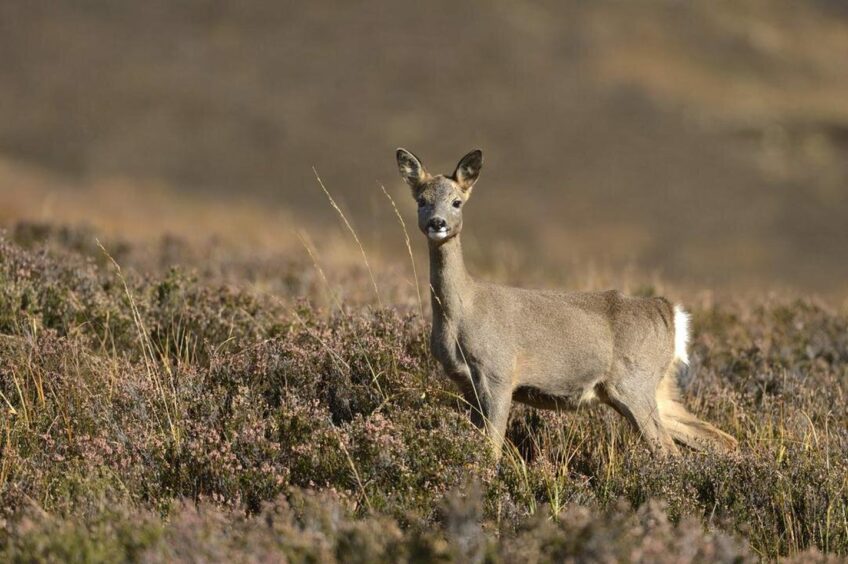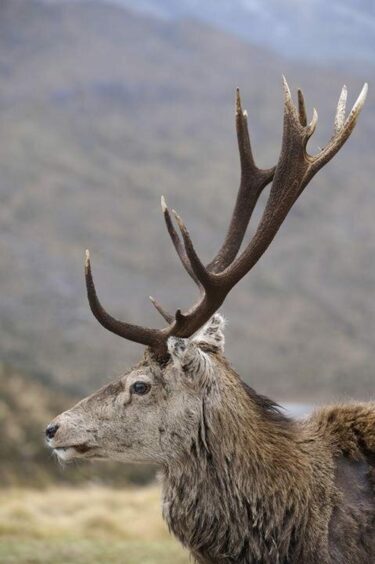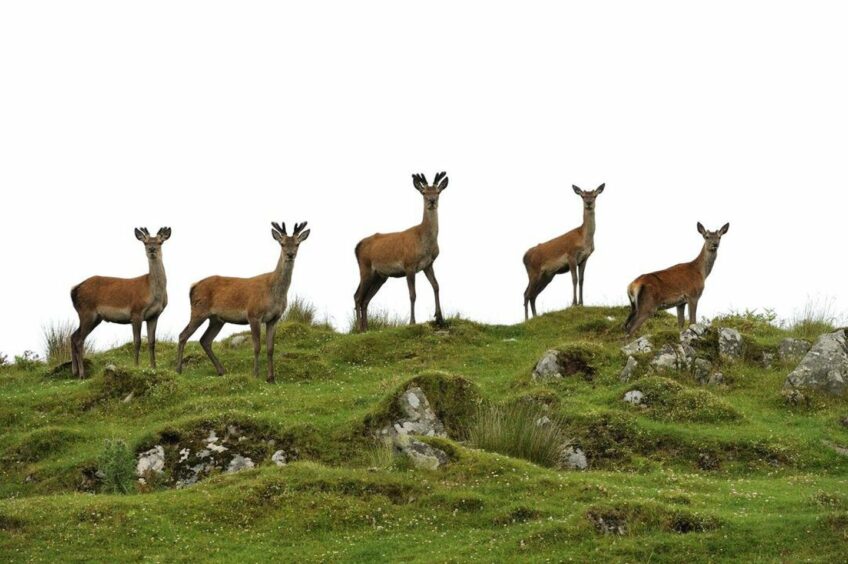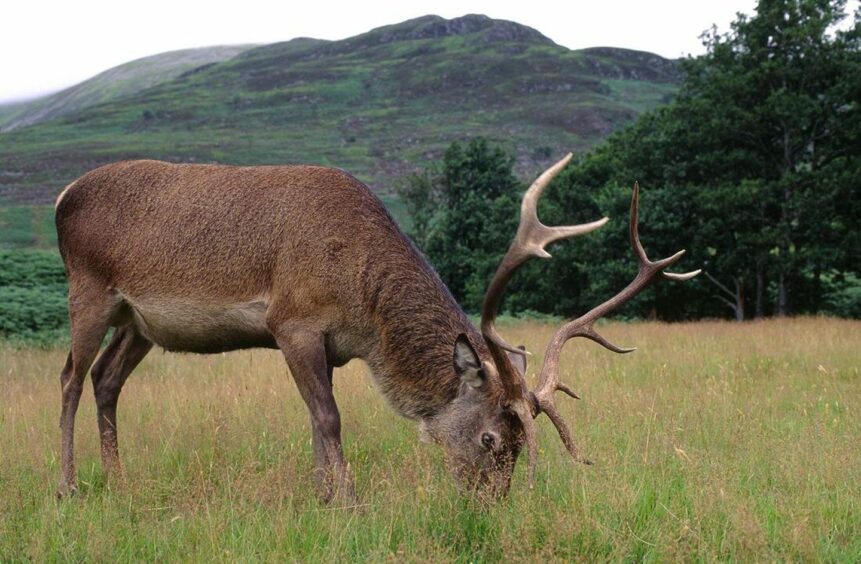Deer are an iconic Scottish species, and their management and the need for culling can be an emotive topic for some. But as the climate and biodiversity loss crises intensify, steps must – and are – being taken to protect Scotland’s environmental future.
Deer have no natural predators in Scotland, and breed quite quickly. Unchecked, their populations can grow and their behaviours can cause damage. That’s why the sustainable management of Scotland’s deer, including a significant reduction in overall numbers, is vital to protect and restore the natural balance of the environment. NatureScot, the public body responsible for Scotland’s nature, and with particular responsibilities for the sustainable management of Scotland’s deer, is leading work with partners across the public sector, private land managers, conservation groups and local Deer Management Groups to deliver this.
-
Some Press and Journal online content is funded by outside parties. The revenue from this helps to sustain our independent news gathering. You will always know if you are reading paid-for material as it will be clearly labelled as “Partnership” on the site and on social media channels.
This can take two different forms.
“Presented by”
This means the content has been paid for and produced by the named advertiser.
“In partnership with”
This means the content has been paid for and approved by the named advertiser but written and edited by our own commercial content team.
We asked NatureScot’s Head of Wildlife Management Donald Fraser to set out five reasons why managing Scotland’s deer population is so vital for the future of Scotland’s nature.
1. It will help fight the climate crisis
Our woodlands and peatlands in particular capture and store carbon from the atmosphere, making them an incredibly important natural resource in combating climate change.
Donald explained how deer and other herbivores can have a negative impact on vital peatlands. He said: “Deer graze on moorland habitats that have vast reserves of peat underneath, and if the peat is exposed this releases carbon. It is about protecting the condition of the vegetation on top of the peatland because if this is in good condition, it can capture and store more carbon from the atmosphere. Habitats that are in good condition and are not impacted by high levels of browsing support a diversity of species that supports the wider ecosystem.”
NatureScot’s deer management work is prioritising actions to reduce deer impacts in particular high-risk geographic locations, such as peatlands, to protect them from further degeneration. Reducing deer numbers in these areas will help the peatlands to recover and play their role in the fight against climate change.[DF1]
2. It will help improve Scotland’s biodiversity
The climate crisis rightly gets a lot of press, but we have another crisis on our hands too – the biodiversity crisis. Globally and in Scotland, nature is in decline. Greater urgency is required to meet the challenges of these twin crises and the Scottish Biodiversity Strategy, due to be launched in late 2022, will set ambitious targets to halt nature loss by 2030 and deliver nature restoration at scale across Scotland by 2045.
The sustainable management of Scotland’s deer, including, in some areas, a significant reduction in numbers, is vital to protect and restore nature, including forest regeneration, woodland creation and peatland restoration. By reducing grazing pressure, we can improve the condition of these important habitats.
“The main impacts of deer are grazing and trampling,” explained Donald. “They are a woodland species so they can have quite a significant impact on woodland regeneration. If we manage our deer population, we can regenerate our woodlands so the seeds can move to new spaces, making way for new trees and species, which allows us to expand our forests. If we lower the impact deer have on our forests, we have a huge opportunity to expand our woodlands in Scotland.”
While real progress has already been made, there is much more to do and NatureScot is focused on working with partners to implement the recommendations of the Independent Deer Working Group, which have been accepted by the Scottish Government.
3. It helps strengthen the rural economy
Deer management is an important part of the rural economy and the jobs and skills associated with it will be critical in moving towards a greener economy with a greater focus on the benefits of protecting and restoring nature.
“As deer do not have any natural predators, the only way we can keep control of numbers is to actively manage their populations. Keeping numbers at a lower level requires a lot of effort and resource. There is a sustained need for employment to control deer levels as culling is a long-term need, not a short-term one. This calls on the skills of professional deer stalkers.”
Deer stalkers and those who live and work on the land will be vital in delivering a better, greener future and NatureScot wants to work closely with rural communities, giving them the opportunity to steer and contribute to positive and sustained change to benefit people, deer and the environment.
4. Venison is a sustainable and environmentally friendly meat
We know that human activities have had a negative impact on the climate, as well as the biodiversity of our countryside. As a result, many people are turning to diet to offset their personal contribution to this problem, through vegetarianism or choosing more sustainable options. As we need to cull our deer population in order to better protect nature, it is actually very sustainable to eat venison meat.
“A selling point of venison is that it is a sustainable, locally sourced meat that is very healthy. Deer are vegetarians and so their meat is low in fat and full of protein and essential vitamins,” explained Donald.
5. It makes deer herds healthier
When deer populations grow to high levels, it makes it harder for them to survive during the long months of winter when feed sources may be limited due to snow cover and the nutrition from the grazing is much less. When resources are scarce and competition is high, in particularly bad winters deer can die from starvation during these tough months.
The welfare of Scotland’s deer is at the heart of NatureScot’s work. They strive to manage deer populations in the safest and most humane way possible in line with industry best practice. Such humane culling contributes to healthier deer herds across the country.
“If deer populations are very high, there can be wellbeing implications that come with that. There is potential for high natural mortality during particularly tough winters. We want to make sure that the population is fitter, healthier, and able to respond to the vagaries of winter. Culling can be hard to think about, but it does benefit the welfare of our deer population too.”
To find out more about deer management, visit the NatureScot website.
